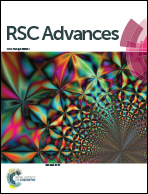A fusion enzyme consisting of bacterial expansin and endoglucanase for the degradation of highly crystalline cellulose
Abstract
We have prepared novel fusion enzymes consisting of Bacillus subtilis expansin EXLX1 and Clostridium thermocellum endoglucanase CelD. These two components are directly fused, or fused using flexible glycine–serine peptide linkers (GGGGS, GS linker) with different lengths: a triplicate (GGGGS)3 linker (GS3) and a sextuple (GGGGS)6 linker (GS6), resulting in fusion enzymes EXLX1-CelD, EXLX1-GS3-CelD and EXLX1-GS6-CelD. The binding ability and digestibility of these fusion enzymes towards a series of cellulose substrates with different crystallinity index (CrI) was examined. Fused with EXLX1, CelD acquired high binding ability to various kinds of cellulose and the linkaer length had no impact on function. In the degradation of cellulose, EXLX1-GS3-CelD exhibited the highest degradation activity among the fusion enzymes examined, suggesting that linker length between the two proteins has a significant impact on the activity of the fusion enzyme. EXLX1-GS3-CelD was found to function more effectively towards higher crystalline celluloses.


 Please wait while we load your content...
Please wait while we load your content...